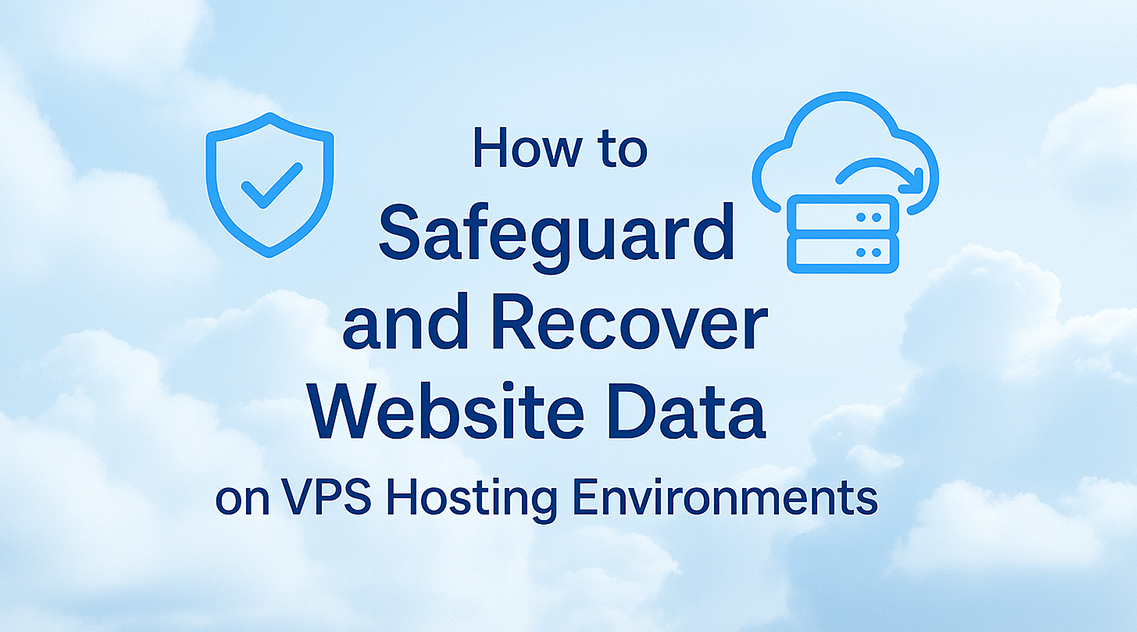 Ensuring the Security and Recovery of Data in a VPS Hosting Environment
Ensuring the Security and Recovery of Data in a VPS Hosting Environment
In today’s digital-driven business landscape, websites are not just online presences-they serve as critical hubs for operations, customer engagement, e-commerce, and overall brand reputation. As organizations increasingly adopt Virtual Private Servers (VPS) for their hosting needs due to the performance, control, and scalability they offer, they must also recognize the heightened responsibility that comes with this level of autonomy.
A VPS environment provides the flexibility to customize and optimize server resources, but it also places the onus of data security and recovery squarely on the user. Implementing comprehensive strategies for data backup and restoration is no longer optional it’s a vital component of any robust IT infrastructure.
These strategies are essential to protect against data breaches, accidental deletion, software corruption, hardware failure, or malicious cyber incidents, all of which can severely impact business continuity and customer trust if not managed proactively.
1. Implement a Redundant Backup Policy
A multi-tiered backup approach is essential for a resilient VPS environment. Consider the following:
- Daily Incremental Backups: Capture only the changes made since the last backup, minimizing storage overhead and reducing backup time.
- Weekly Full Backups: Perform a comprehensive backup of the entire VPS environment to serve as a clean restore point.
- Offsite Backups: Use cloud-based storage or remote servers to store copies of backups, protecting against local disk failures or data center outages.
- Snapshot-based Backups: Utilize hypervisor-level snapshots for rapid rollbacks, particularly useful before software upgrades or system changes.
2. Use Automation for Backup Scheduling
Manual backup processes are error-prone and inconsistent. Automate backup operations using scripts or tools like rsync, cron jobs, or third-party VPS control panels such as Plesk or cPanel, which offer scheduled backup features with minimal intervention.
3. Encrypt Backup Files
To ensure the protection of data against unauthorized access, it is imperative to implement encryption measures for data both during transmission and when stored. Use AES-256 encryption for backup archives and SSL/TLS protocols when transferring backup files to remote locations. Incorporating GPG (GNU Privacy Guard) can add an additional encryption layer for sensitive data.
4. Verify and Test Backup Integrity Regularly
A backup holds value only when it can be reliably restored. Periodically perform restoration drills on a staging server to:
- Confirm data consistency
- Validate script and system configuration compatibility
- Identify bottlenecks or errors in the restore process
5. Leverage File Versioning and Retention Policies
Avoid overwriting backups by implementing file versioning. Versioning files helps restore data lost due to errors or corruption. Define retention policies based on:
- Data sensitivity
- Compliance requirements (e.g., GDPR, HIPAA)
- Business continuity plans
6. Protect the VPS Host with Security Hardening
Your VPS should be fortified to prevent breaches that could compromise backup data. Essential practices include:
- Firewall configuration (e.g., iptables, ufw)
- Intrusion Detection and Prevention Systems (IDS/IPS)
- SSH key authentication and restricted root access
- Real-time malware scanning
7. Monitor Backup Logs and Storage Metrics
Implement centralized logging and monitoring for backup jobs. Tools like Logwatch, Monit, or integrated monitoring dashboards help detect failed backups, quota overruns, or disk health issues, allowing you to take timely action.
Lost website data? Get back online fast with actsupport!
Trust our experts to swiftly recover your critical data on VPS hosting environments. Don’t wait-secure your recovery with actsupport today!
Stay updated! Follow us on social media! Facebook, Twitter, LinkedIn
Check out our newest blog entry (Why Proactive Hosting Support Wins Every Time)



